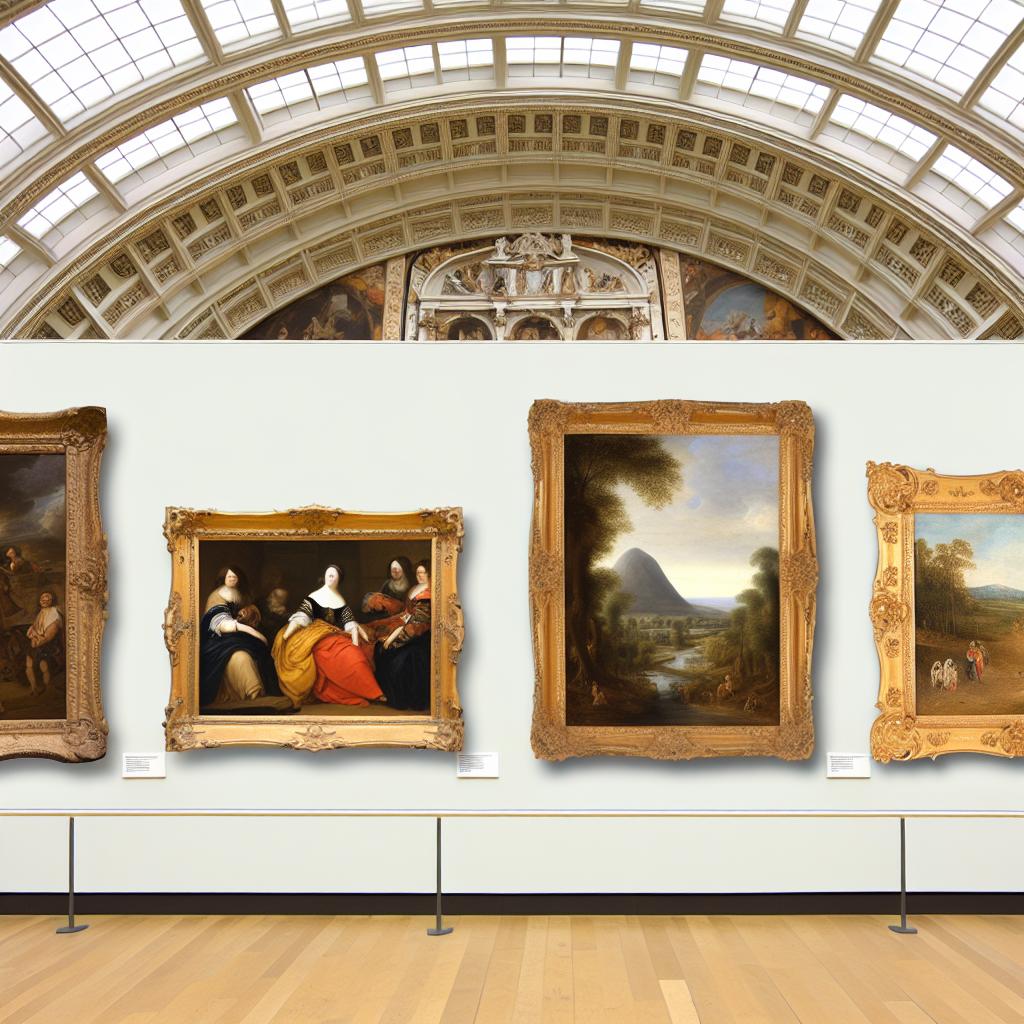The Louvre: Home to Timeless Masterpieces
The Louvre Museum, located in Paris, stands as one of the most celebrated institutions in the world, noted for its expansive collection of art and historical artifacts that span a multitude of eras and cultural origins. At the heart of its many galleries, one finds Leonardo da Vinci’s “Mona Lisa”, a painting that has captured the attention and imagination of audiences and scholars alike for several centuries.
Leonardo da Vinci’s “Mona Lisa” is renowned not only for its subject’s mysterious smile but also for the masterful use of the sfumato technique. This method, characterized by its soft transitions between colors, allows for a more harmonious blending of shades and contributes to the painting’s sense of depth and realism. Created in the early 16th century, the “Mona Lisa” stands as a testament to da Vinci’s genius and the Italian Renaissance’s artistic advancements.
In addition to the “Mona Lisa,” the Louvre houses the powerful and evocative Eugène Delacroix’s “Liberty Leading the People.” This iconic 19th-century artwork commemorates the July Revolution of 1830 and stands as a symbol of political unity and resilience. The figure of Liberty, portrayed as a dynamic and commanding female leading a diverse array of citizens, reflects the hopes and tumult of a nation in transformation. Delacroix’s composition and use of color effectively capture the spirit of the age, making it a central piece in understanding the cultural and political history of France.
The Uffizi Gallery: The Cradle of Renaissance Art
Situated in the heart of Florence, the Uffizi Gallery is intrinsically linked to the development and flourishing of Renaissance art. One of its most prominent pieces, Sandro Botticelli’s “The Birth of Venus,” offers insight into the ideals and aesthetic values of the era. The painting portrays the mythological birth of the goddess Venus, emerging elegantly from the sea atop a shell.
Botticelli’s skillful use of color, along with his exquisite line work, creates a sense of ethereal beauty that is both accessible and elevating. This piece reflects the Renaissance emphasis on the fusion of myth and humanism, embodying the intellectual revival and artistic exploration that characterized the period.
Another significant painting within the Uffizi is Leonardo da Vinci’s “Annunciation.” It showcases da Vinci’s early forays into the meticulous representation of light and shadow, elements that would come to define his later masterpieces. The “Annunciation” is appreciated for its detailed execution and the innovative approach to scene composition, capturing a key moment of religious import with sophistication.
Madrid’s Prado Museum: A Testament to Spanish Mastery
Madrid’s Prado Museum stands as a beacon of Spanish artistic achievement, housing works of profound national significance. Among these, Diego Velázquez’s “Las Meninas” is often considered a pinnacle of Western painting.
In “Las Meninas,” Velázquez presents a complex interplay of observation and representation, providing viewers with a unique glimpse into the intricacies of the Spanish royal court. The inclusion of the artist himself within the canvas is a bold commentary on the nature of art and reality. The composition’s complexity and the dynamic use of light and shade have made the painting a subject of extensive academic study, reflecting broader cultural themes.
The Prado also showcases Francisco Goya’s “The Third of May 1808,” a stark depiction of the horrors of war. Goya’s use of chiaroscuro techniques – the interplay of light and dark – heightens the emotional gravitas of the scene and underscores the tragic cost of conflict. This work is a cornerstone of political art and highlights not only historical events but also the enduring power of art as a vehicle for social commentary.
The Rijksmuseum: Dutch Golden Age Realism
The Rijksmuseum in Amsterdam is celebrated for its remarkable collection of art from the Dutch Golden Age, a period renowned for its unique contributions to realism and artistic achievement. One of its standout pieces is Rembrandt van Rijn’s “The Night Watch.”
This monumental painting of a civic militia exemplifies Rembrandt’s innovative approach to portraiture, using dynamic poses and contrasting light to infuse a sense of movement and depth. The technique challenges traditional static portrayals, engaging viewers into the midst of action, and reinforcing the painting’s theatrical quality.
Another key artwork in the Rijksmuseum is Johannes Vermeer’s “The Milkmaid,” a piece celebrated for its serene depiction of domestic life. Vermeer’s exceptional attention to realistic detail and his sensitive rendering of light reflections lend the painting an air of tranquility and dignity. This work serves as a fine example of how the Dutch artists retained the intimacy of everyday life while imbuing it with artistic significance.
The Vatican Museums: A Spiritual Art Journey
The Vatican Museums in Vatican City offer a revered collection of religious artworks, with Michelangelo’s frescoes in the Sistine Chapel being their most famous contribution. Among these, “The Creation of Adam” stands out as an iconic vision of divine and human connection.
Michelangelo’s deep understanding of human anatomy and his capacity to convey theological narratives through bold visual language make the frescoes a cornerstone of Western art. The optical effects and grandeur of the imagery invite reflection on the nature of existence and spiritual belief.
Complementing Michelangelo’s work is Raphael’s “School of Athens,” housed within the Vatican’s Raphael Rooms. This fresco celebrates classical philosophy and features allegorical representations of historical figures such as Plato and Aristotle. Raphael’s grand composition and its integration into architectural elements create an immersive experience that bridges classical ideals with Renaissance humanist thought.
These art collections across various European museums hold more than the mere beauty of their pieces; they represent critical points in art history that have informed and shaped Europe’s cultural and intellectual trajectory. Through these museums, the legacy of artistic innovation and the exploration of human experience continue to inspire future generations.

